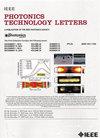湍流通道激光雷达的理论精度极限
IF 2.5
3区 工程技术
Q2 ENGINEERING, ELECTRICAL & ELECTRONIC
引用次数: 0
摘要
大气湍流通道是开发自由空间激光应用时必须考虑的一个关键因素。虽然对湍流条件下的光无线通信(OWC)进行了广泛的研究,但对湍流通道中的光探测和测距(LiDAR)的研究仍然相对较少。在这封信中,理论建模和推导发展表征激光雷达的测距和速度精度在湍流通道。通过蒙特卡罗仿真验证了所导出的Gamma-Gamma通道的cram本文章由计算机程序翻译,如有差异,请以英文原文为准。
Theoretical Precision Limits of LiDAR in Turbulent Channels
Atmospheric turbulence channels represent a critical factor that must be considered when developing free-space laser applications. While extensive research has been conducted on optical wireless communication (OWC) in turbulent conditions, investigations into light detection and ranging (LiDAR) in turbulent channels remain relatively unexplored. In this letter, theoretical modeling and derivations are developed to characterize the ranging and velocity precision of LiDAR in turbulent channels. The derived Cramér-Rao lower bounds (CRLBs) in Gamma-Gamma channels are verified by Monte Carlo simulation. The CRLBs reveal that, under identical signal-to-noise ratio (SNR) conditions, the precision values at a Rytov variance of 0.3 and 0.6 are 1.56 and 2.37 times those at a Rytov variance of zero for the time-of-flight (ToF) LiDAR, respectively. In the frequency-modulated continuous wave (FMCW) LiDAR system, the corresponding precision value ratios are 1.15 and 1.29. These findings enable rigorous performance evaluation and optimized design of LiDAR systems operating in turbulent environments.
求助全文
通过发布文献求助,成功后即可免费获取论文全文。
去求助
来源期刊

IEEE Photonics Technology Letters
工程技术-工程:电子与电气
CiteScore
5.00
自引率
3.80%
发文量
404
审稿时长
2.0 months
期刊介绍:
IEEE Photonics Technology Letters addresses all aspects of the IEEE Photonics Society Constitutional Field of Interest with emphasis on photonic/lightwave components and applications, laser physics and systems and laser/electro-optics technology. Examples of subject areas for the above areas of concentration are integrated optic and optoelectronic devices, high-power laser arrays (e.g. diode, CO2), free electron lasers, solid, state lasers, laser materials'' interactions and femtosecond laser techniques. The letters journal publishes engineering, applied physics and physics oriented papers. Emphasis is on rapid publication of timely manuscripts. A goal is to provide a focal point of quality engineering-oriented papers in the electro-optics field not found in other rapid-publication journals.
 求助内容:
求助内容: 应助结果提醒方式:
应助结果提醒方式:


